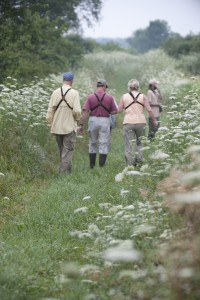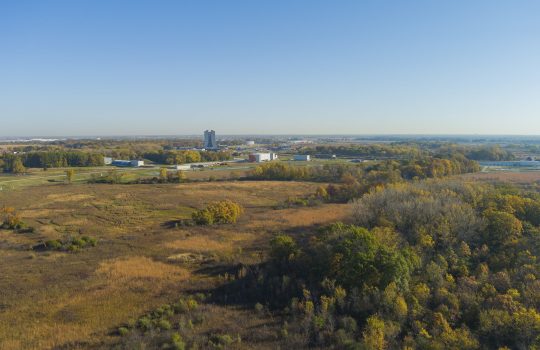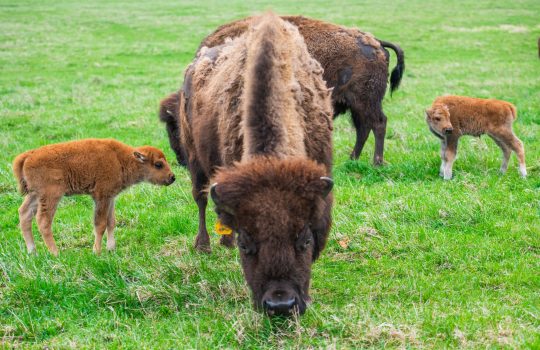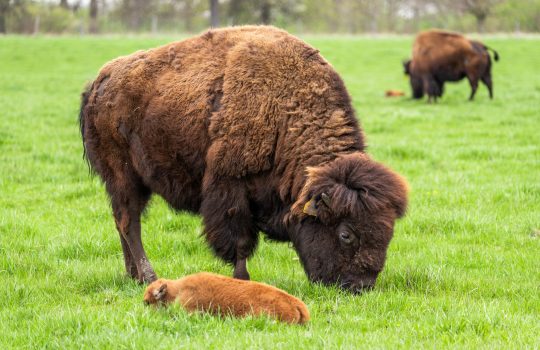
Fermilab has a strong birdwatching community, one that hosts the occasional competition. Photo: Reidar Hahn
In 1971, bird-watchers found a rare bird near a rest stop picnic table in Patagonia, Arizona. As word got out, birders flocked to the rest stop for a glimpse. Looking for the first rare bird, they found a second. And then another. Soon, the rest stop became famous among bird-watchers.
“The reason is not that it was a particularly good area for birds, but that there were a lot of people birding in the area to find the rare birds,” said Peter Kasper, Accelerator Division scientist and lead bird monitor at Fermilab. The events at this rest stop gave name to a birding phenomenon, the Patagonia Picnic Table Effect.
“And there’s something of that at Fermilab,” Kasper said.
Binocular-bearing birders visit Fermilab from near and far, but the Patagonia Picnic Table Effect doesn’t explain all the allure. Kasper also credits Fermilab’s popularity as a birding site to its diversity of species. Birders have found 287 bird species at Fermilab.
Volunteer bird monitors have tracked Fermilab’s birds for 30 years. A small, dedicated crew — led by Kasper — continues to monitor the birds weekly. Even more bird-watchers come for the annual, daylong Christmas Bird Count, a National Audubon Society event. Last year, the site that includes Fermilab, a circle 15 miles in diameter known as the Fermilab Circle, had 106 observers total — more than any other circle in Illinois.
Dave Spleha, member of the Fermilab Ecological Land Management Committee, has been birding at the lab for 20 years. Spleha helps upkeep Kasper’s online diary, an archive of bird sightings. The sightings are organized into five-year survey periods.
“All this data helps us visualize the changes in the bird population over time,” Spleha said.
Fermilab ecologist Ryan Campbell and the rest of Roads and Grounds also find the data useful.
“Birds are an important part of the ecosystems here at Fermilab, and we are grateful for the dedication of the monitors,” Campbell said. “The rigor of the sampling in this long-term study is a benchmark for the quality of data we’re trying to use in order to inform our ecological land management and protection efforts.”
Fermilab hosts a wide variety of birds because it has wide variety of habitat, including wetlands, grasslands and woodlands. The diversity of species attracts bird-watchers, but it also gives Fermilab an advantage in unofficial birding competitions.
The premise of these competitions is simple. One person looks for birds at one site; the other looks for birds at another. The winner is whoever saw the most bird species in a six-hour window.
“He threw down the gauntlet,” Kasper said of a birder friend who forced him into a competition one day. “Illinois Beach State Park versus Fermilab. I didn’t stand a chance.”
Illinois Beach State Park is on Lake Michigan, a magnet for migrating birds. Though Kasper didn’t out-bird his friend that day, sites sans lakefront make easier adversaries.
Glenn Perricone, Fermilab bird monitor and biology major at Elmhurst College, runs competitions every other month with a birder friend at Pratt’s Wayne Woods Forest Preserve.
“We just bird our brains out,” Perricone said. “We go all over the place looking for as many species as we can find. It’s fun. It’s friendly competition.” Perricone usually wins these games, but attributes his success to the many bodies of water at Fermilab, which allow him to crush the competition in shorebirds and waterfowl. The real benefits of species diversity at Fermilab, however, lie elsewhere.
“We see species diversity as the measure of the quality of the habitat,” Kasper said. The goals are to maintain this diversity, an indicator of healthy habitats, continue taking accurate data for Kasper’s web diary, and enjoy birding for what it is — not to win.
“Birding for me is not about the silly competitions,” Perricone said. “It’s about being in nature. I’m out here seeing amazing things that normally people just drive or walk past and don’t even think twice about.”



